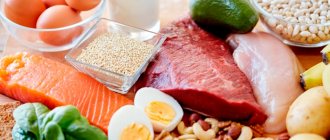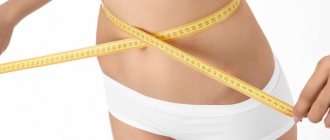Home — For the public
- Map of medical organizations
- Vaccination
- Clinical examination
- Fluorography
- Addresses and opening hours of clinics
- Emergency rooms
- Oncology
- Where to take an HIV test
- Healthy child's office
- Services
- Prevention of CVD
- Disease Prevention
- World Patient Safety Day
- Newspaper "Medical News"
- specialist
- School of Health
— Disease prevention
- HIV infection
- All about vaccination
- All about proper nutrition
- Hepatitis
- Flu
- Dementia
- Schoolchildren's health
- STD
- Tick-borne encephalitis
- Whooping cough
- Measles
- Legionellosis
- Meningococcal infection
- Oncology
- Acute intestinal infection
- Pediculosis
- First aid
- Pneumococcal infection
- Pneumonia
- Prevention of rabies
- Dependency Prevention
- Rotavirus infection
- Diabetes
- Cardiovascular diseases
- Injuries
- Tuberculosis
- Tularemia
- Physical activity
- Obstructive pulmonary disease
- Exotic infections
- Ecology
- Why is swimming in ponds dangerous?
— All about proper nutrition — How many times a day should you eat
All nutrition recommendations are individual and depend on your goals.
Proper eating behavior involves not only controlling how much and what kind of food ends up on the plate. It also includes an understanding of what hours a person should and can afford a snack, how many times a day he should eat, and how to deal with hunger.
Proper nutrition VS diet
Rational nutrition is often contrasted with diet. This is due to the fact that the passion for any restrictive diet is associated with the desire to get the body into better shape by giving up a number of foods and streamlining the regime.
What is the fundamental difference between them?
The stable phrase “go on a diet” stipulates that after achieving results it will be possible to “get off” and return to normal eating behavior. As a result, the person:
- perceives dietary restrictions as temporary;
- does not think that the diet can be harmful;
- agrees more easily to exotic options;
- experiences stress and chooses reward options for patience.
Unlike dieting, nutrition (or nutrition) is a long-term project. It involves a complete change in habits and diet composition and really only works when it becomes part of a new lifestyle. The regime for losing weight on PP and maintaining optimal weight differ only in that when losing weight, the daily need for proteins, fats and carbohydrates changes.
Nutritionists advise recalculating and adapting your diet after losing every 5 kilograms of weight. This is the main feature of proper nutrition: if a person feels good and observes positive external changes in the diet, he can remain on such a menu as long as he likes. This eliminates the need to constantly look for new “working” diets and try strange food combinations to lose weight.
Following a regimen to maintain weight under PN conditions should become the same habit as monitoring your appearance and health.
How to make a plan for a healthy person
Making a plan is not just about counting calories and the ratio of proteins, fats and carbohydrates. It is also important to determine your preferences so that food brings pleasure. Basic principles when drawing up a plan:
- According to WHO recommendations, 50% of energy should come from complex carbohydrates (porridge, pasta, potatoes, bread).
- For a sedentary lifestyle, 1 g of protein per 1 kg of weight per day is sufficient. During active physical activity, as recommended by the authoritative American College of Sports Medicine ACSM, 1.4 or 1.6 g per 1 kg of weight.
- Carbohydrates should be up to 60% of the total food volume, with active loads - 8-10 g per 1 kg of weight per day.
The meal plan doesn't have to be strict. Even nutritionists recommend that 20% of your meals be made up of your favorite foods, even if they are “harmful.” And nothing will happen if you visit a restaurant and eat pizza once a month.
A sample meal plan looks like this:
| Meals | What time of day to eat right, hours | Percentage of Daily Calories | Optimal distribution of BZHU as a percentage of the daily norm |
| First | 7 | 30 | Carbohydrates – 30. Proteins – 20. Fats – 30. |
| Second | 10 | 10 | Carbohydrates – 20. Proteins – 20. Fats – 20. |
| Third | 13 | 30 | Carbohydrates – 20. Proteins – 20. Fats – 20. |
| Fourth | 16 | 10 | Carbohydrates – 10. Proteins – 20. Fats – 20. |
| Fifth | 19 | 20 | Carbohydrates – 10. Proteins – 20. Fats – 20. |
Important! Sweet sodas and chips are among the TOP 5 most hazardous to health. Obesity, diabetes, gastritis, vascular blockage, and malignant neoplasms can be caused by these products.
You may also be interested in: Fasting day on chocolate
Protein day: what you can eat
Will separate nutrition help your health and figure?
Calorie content and daily routine
Sufficient calorie intake and frequency of meals protect against hunger. Infrequent nutrition leads to the fact that a person cannot wait for lunch or dinner and either overeats or begins to snack on foods that are not the most beneficial for health and figure.
So, how to plan the daily calorie intake and dietary supplements, the correct diet and drinking regimen - simple advice from a nutritionist:
- It is necessary to calculate the daily calorie intake. It depends on the gender, age, body weight and activity of the person. To do this, use mobile applications or online calculators; A more accurate result can be obtained by contacting a specialist.
- When calculating the BJU ratio, you should “start” from the fact that a person should eat 1 g of protein per 1 kg of body weight. This amount of the nutrient must remain virtually unchanged - the body suffers from both a deficiency and an excess of proteins. In general, the proportion of BZHU should be close to the classic one: 1: 1: 4; in case of “too much”, the caloric content is reduced due to fats and carbohydrates.
- A person should drink at least 35 ml/kg of clean water per day. So a girl weighing 62 kg will need 2170 ml of water. In order not to experience stomach fullness and discomfort, it is enough to divide it into 10-11 doses. The first glass is within half an hour after waking up, before breakfast.
- Breakfast is a must for a healthy diet. Skipping or postponing this meal slows down fat burning, forcing the body to urgently synthesize glucose and release lipids into the blood. Breakfast composition: proteins and carbohydrates. It must be eaten within an hour of waking up.
- During the day, it is recommended to eat up to 5-6 times: three main meals and 2-3 snacks. This frequency of meals helps to avoid overeating, not feel hungry and not be distracted by food during the working day.
- Serving size is about 200 g. This is the optimal amount at which a person will be full until the next meal, but will not feel heavy and regret having overeaten. To estimate the size, use the method of comparing a portion with a palm, a fist, or a handful.
Meal times are calculated individually, depending on the time of waking up and going to bed. Here is a standard proper nutrition schedule for those who get up after 6 a.m. and work 1 shift:
- breakfast – 7:00;
- 1 snack – 10:00;
- lunch - until 14:00;
- afternoon tea – until 16:00;
- dinner – until 18:00;
- evening snack - 2 hours before bedtime.
Proper nutrition requires certain food restrictions. To avoid stress and the subsequent desire to “reward” yourself, you should allow your favorite dishes on the menu, taking into account their composition and calorie content. Their energy value should not exceed 10%-20% of the daily diet.
Schedule features: what and when to eat for adult women, men, children
The taste preferences of men and women, as well as children, are very different. Women and children are more sensitive to sweets, and men are more sensitive to bitter and salty.
The fair sex has less muscle volume than the stronger sex, which has high testosterone levels. And children undergo active growth processes of the skeleton and muscles, unlike adults.
By nature, a woman is given the ability to accumulate subcutaneous fat on her stomach and thighs. This is necessary for normal gestation.
But this feature requires a different approach to nutrition so as not to face the problem of extra pounds.
The diet for women is as follows:
- Eat at least 3 full meals and have 2-3 snacks. Read more about snacking with proper nutrition by following the link.
- You need to get up early and go to bed not late. A young woman under 30 years old needs to sleep at least 8-9 hours, after 40 years old - at least 8 hours, and after 50 years old - at least 7 hours.
- Approximately the same amount of carbohydrates and proteins is recommended in the menu.
- Sodas, even those with sweeteners, as well as chips, instant cereals, and milk chocolate are harmful to the female figure.
- There is a minimum of sweets and only in the first half of the day.
Men require more calories to maintain muscle mass. By nature they are given more physical strength, but it requires energy.
The diet for men should take into account the following rules:
- You need to consume several times more carbohydrates than women.
- You need to eat at least 3 full meals and 2-3 snacks. The main amount of calories can be consumed during the day and for breakfast.
- Protein food to maintain muscle mass should be on the table every day.
- For men's health and potency you need seafood, mushrooms, nuts, honey, figs, dates, and pumpkin.
- Beer is harmful for men at any age; it reduces libido.
Baby food is slightly different from adult food. The daily routine and food intake depend on age and differ markedly. The younger the child, the more important it is to have naps during the day and eat more often. It is advisable for even a junior schoolchild to eat 5 times a day.
An approximate diet for children under 8-9 years of age is as follows:
- You need to eat at the same time.
- Breakfast, lunch, afternoon snack, dinner and a light snack at night are the required minimum.
- The diet should be varied, be sure to have vegetables and fruits every day.
- You need to sleep at least 11 hours, and your last meal is 2 hours before bedtime.
- Morning exercises are a must, and you can start eating 20 minutes after exercise. It is advisable to enroll your child in sports sections. Physical activity has a beneficial effect on the growth and development of the body and mental activity. The absorption of products will be much more effective.
- You cannot force a child to eat something that he absolutely does not want. In this case, even the healthiest food will not be beneficial. But you need to offer healthy food that he likes.
Snacks and main meals
The similarity between PN and a dietary diet lies in the frequent and fractional consumption of food. This reduces the load on the gastrointestinal tract, liver, and pancreas, and the person constantly receives the required amount of nutrients. During the day, the intervals between meals should be 2.5-3 hours. The percentage of energy in the diet during each meal is also important. Nutritionists recommend allocating up to 5% of your daily calorie intake for each snack. For example, with an estimated value of 1800 kcal/day, 1 snack will be 90 kcal. It could be:
- 2 loaves of bread and 50 g of low-fat cottage cheese;
- a piece of chocolate;
- 1 loaf of bread and a glass of kefir;
- 2 apples.
Larger snacks are irrational, since their main task is to protect against hunger between main meals. “Abuse” of snacks and the insistent recommendation to eat more often in order to “accelerate metabolism” is nothing more than one of the dietary myths. It was born from statistical research as a hypothesis that frequent meals are the key to slimness.
Back in 1997, French nutritionists conducted a clinical study and proved that such a regimen, unlike assessing calories received and expended, does not lead to slimness. But does this mean that you should completely give up snacking? No, extra meals help avoid breakdowns and maintain performance throughout the day.
The optimal distribution of calorie content for main meals is as follows: 25% for breakfast and dinner, 35% for lunch.
Diet: number of meals
The main criterion for determining the number of meals is the feeling of hunger. It is important to distinguish between hunger and appetite. The first speaks about the body’s need for energy, the second about the desire to receive taste pleasure. It is also necessary to take into account the person’s age, characteristics of his work activity, daily routine, and the presence of somatic diseases.
The optimal diet is considered to be four meals a day, consisting of breakfast, lunch, afternoon snack, and dinner. It has the following advantages:
- ensures uniform load on the digestive system;
- creates conditions for the optimal process of digestion and assimilation of food;
- prevents bile stagnation;
- maintains the constancy of the internal environment due to the regular supply of necessary substances.
Food at work - and let the whole world wait
The transition to a balanced diet is associated with a constant assessment of the composition of products. At first, diet planning is accompanied by calculations of calorie content and dietary fat. This requires abandoning ready-made multi-component dishes and preparing meals yourself.
Traditionally, eating together is used as a way of communication. People who are switching to a healthy diet may worry about how they will look compared to their colleagues. However, fears about the appropriateness of buckwheat or apple during a general tea party often do not reflect reality. Yes, the most common snacks in the workplace are still sweets and fast food, but the growing popularity of healthy eating will make it possible to interest colleagues in new recipes.
When telling how to eat properly at work, nutritionists advise taking prepared foods with you. With a standard schedule, you will need to stock up on 3 servings of food: 1 lunch and 2 snacks. The composition of the basic techniques does not raise questions: soup, meat or fish with side dishes, salads. But among standard snacks, apples appear more often, which are not allowed for everyone: they increase gastric secretion and stimulate appetite.
In weight loss and weight maintenance mode, the following food options are allowed:
- sandwiches made from bread and low-fat cheese;
- bread with fish and herbs;
- homemade marshmallow without sugar;
- fruits: oranges, bananas, pears;
- sliced vegetables with 5% homemade cheese;
- eggs with herbs, vegetables;
- natural kefir or yogurt;
- dried fruits, nuts.
Healthy eating rules
Organizing a proper diet is very important. Scientists have proven that adults who use high-quality products for cooking live longer and get sick much less often than others. If you are seriously concerned about your health or the diet of your loved ones, then first learn the basic rules of nutrition:
- Be sure to include protein in every meal. However, this does not mean that you should eat exclusively meat and fish all day. Dairy products, legumes or eggs are also excellent sources of protein.
- Create a routine and proper daily routine. Try to eat strictly at certain hours and do not skip lunch or dinner.
- Try to eat as little fat as possible. If you cook food in oil, then use products that contain no more than 10% fat. This rule does not apply to so-called healthy fats, which are found in avocados, nuts, and seafood.
- Eat whole grain cereals. They will have to be boiled a little longer more thoroughly, but they contain more vitamins.
- Drink mineral water. You don’t need to do any special calculations, just replace your regular drinks during the day with a glass of drinking water.
List of foods for proper nutrition
In addition to following the basic rules of nutrition and regimen, you will have to learn about the correct ratio of foods, and also learn how to combine them. Conventionally, all food is divided into three types. This:
- protein;
- neutral;
- starch.
Each category is absorbed by the body differently: some foods require more energy to process, while others pass almost immediately from the stomach into the intestines. In order not to put unnecessary stress on the body, the exact compatibility of products for proper nutrition is very important. The following table will help you combine ingredients. At one meal you need to eat foods from the first and second columns or from the second and third columns:
| Protein food | Neutral food | Starchy food |
| Meat | Nuts and seeds | Corn |
| Bird | Cream and butter | Buckwheat |
| Fish | Vegetable oils | Oats |
| Seafood | Vegetables and mushrooms (carrots, beets, celery, legumes, cabbage, etc.) | Rice |
| Fermented milk products | Wheat | |
| Sour fruits (oranges, lemons, strawberries, cherries, apples, others) | Sweet fruits (bananas, pears, Jerusalem artichokes, raisins) | |
| Sauces and dressings for dishes based on vegetable oils, lemon juice, apple cider vinegar, mayonnaise | Honey | |
| Eggs | Beer | |
| Tomato juice | ||
| Salad dressings: sour cream, cream. |
How to cook food correctly
To preserve all the beneficial substances in vegetables, it is better to fry or stew them at a temperature no higher than 60 degrees. Steaming, baking or frying at 100 degrees will help not to lose the nutritional value of meat, poultry and fish. At the same time, the process of baking a kilogram of beef tenderloin itself is long - from 60 minutes to two hours. Marinades help reduce this time. High-temperature cooking of foods with proper nutrition is unacceptable, and fried foods can be eaten extremely rarely.
Is it possible to eat before bed
Late meals actually worsen the quality of sleep: it becomes more restless. The idea of going to bed with a half-empty stomach is often explained as follows: in 1 hour of sleep, the body spends an average of about 50 kcal. Taking a break from food for 10 hours will allow you to “burn” 550 kcal. If a person eats at night, his body will be busy processing food rather than burning fat.
However, the suggestion “not to eat after 6” has no scientific basis. The myth that every crumb of bread that gets into your mouth in the evening is inevitably deposited on the sides was debunked by Israeli scientists from the Institute of Nutrition. They proved that eating carbohydrates at night does not increase the risk of weight gain.
Answering the question of how many hours before bedtime you can eat, nutritionists say that the total daily calorie intake and energy expenditure play an important role. If a person consumes the required amount of nutrients or is in a slight deficit (up to 20% of calories), he does not gain weight, but maintains or loses weight. The time of dinner in this case does not play a special role, however, the best hours for the main meal are from 17:30 to 18:30, and for a snack at night - 2 hours before bedtime.
Evening fasting with refusal of any food after five or six o'clock in the evening provokes a breakdown with uncontrolled emptying of the refrigerator. Some restriction recommended in a healthy diet really helps people losing weight to control their eating behavior and not go beyond calorie limits.
Proper nutrition is based on taking into account the needs of the body. It develops new healthy habits, reduces the likelihood of relapse and restores health. Self-cooking helps you fully control the composition of dishes, organize meals and snacks at home and at work.











